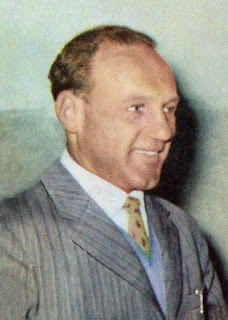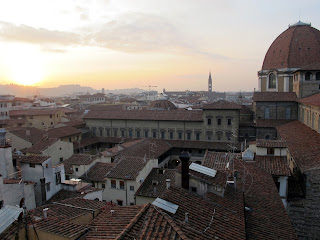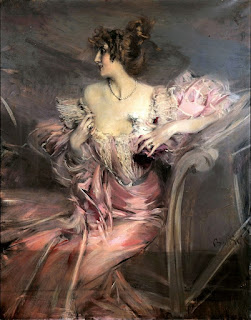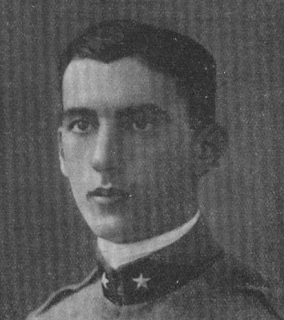Neapolitan who founded the San Francisco Opera
 |
| Gaetano Merola ran the San Francisco Opera Company for 30 years |
Gaetano Merola, a musician from Naples who emigrated to the
United States and ultimately founded the San Francisco Opera, was born on this
day in 1881.
Merola directed the company and conducted many performances
for 30 years from its opening night in September 1923 until his death in August
1953.
He literally died doing what he loved, collapsing in the orchestra
pit while conducting the San Francisco Symphony Orchestra during a concert at
an outdoor amphitheatre in the city.
The son of a violinist at the Royal Court in Naples, Merola studied
piano and conducting at the Conservatorio di San Pietro a Majella in Naples, graduating
with honours at the age of 16.
Three years later he was invited to New York to work as assistant
to Luigi Mancinelli, another Italian emigrant, born in Orvieto, who was a noted
composer and cellist who was lead conductor of the New York Metropolitan Opera.
Demand for his services grew and he made regular guest appearances
with companies across America and beyond, including a stint at Oscar
Hammerstein’s London Opera House on the site of what is now the Peacock Theatre
in Holborn.
 |
| Merola in action with the baton |
He became a regular visitor to San Francisco with Fortune
Gallo’s San Carlo Opera Company – named after the Naples opera house – and it
was after becoming acquainted with many opera enthusiasts there that he identified
the city as potentially one to rival New York as a centre that could attract
the world’s top stars.
Merola noted how much the city was prepared to pay to have
such illustrious companies as the Chicago Opera and the Scotti Company as well
as the San Carlo to perform there and determined that he would be the man to give
San Francisco its own company and make it as prestigious as any across the
country.
Invited to make his home there by a philanthropic patron of
the arts who set Merola and his wife up in an apartment, he immersed himself in
the city’s large Italian community, where there was much enthusiasm about his ambition to bring the world's finest opera stars to the city.
When, in 1922, he hit upon the idea of a two-week season of
open air concerts at Stanford Stadium, where he had noted during a football
game how much the half-time marching band benefitted from the venue’s acoustics,
they were all for it and there was no shortage of businessmen and wealthy
professionals from the community willing to offer financial support, investing
between $500 and $1,000 each in the venture.
 |
| Beniamino Gigli was one of the big names Merola was able to attract to perform in San Francisco |
Merola signed up many stars of the day, including the
Italian tenor Giovanni Martinelli, the American soprano Bianca Soraya and the
Spanish baritone Vincente Ballester. The audiences were large and enthusiastic,
rising from around 6,000 for the opening performance of I Pagliacci to 10,000
for Faust on the closing night.
Yet it made no money.
Indeed, once the costs were reckoned up, Merola had to tell his backers
they were liable to a $19,000 shortfall. He feared his dream was over until Giulio
Stradi, a produce retailer who was one of the bigger investors, spoke up for
the rest of the group by putting an arm round Merola’s shoulder and telling him
the experience had been worth every penny.
They paid his dues in full and encouraged him to pursue
another funding scheme, this time not relying on the largesse of a small number
of wealthy patrons but by finding 750 individuals willing to pay $100 each, which
included a $50 season ticket.
In the event, Merola attracted more than 2,400 investors and
comfortably hit his funding target. His San Francisco Opera Company was born
and made its debut at the city’s Civic Auditorium with Martinelli and soprano
Queena Mario starring in Puccini’s La bohème.
 |
| The War Memorial Opera House opened in 1932 |
More productions followed, with headline stars including Beniamino
Gigli and Giuseppe de Luca, and by the end of the 1923-24 season he was able to
pay his investors a dividend.
The San Francisco Opera was now established and its
continued success in spite of the financial Depression led in 1931 to the
construction of a permanent home, the grand Palladian-style War Memorial Opera
House, designed by the architect Arthur Brown Jr. It opened in October 1932 with a performance
of Puccini’s Tosca, with the Italian soprano Claudia Muzio in the title role.
Merola began to wind down in the 1940s, bringing in Arturo
Toscanini’s assistant Kurt Herbert Adler to serve as conductor, choral director
and his deputy. Merola, meanwhile,
continued to use his contacts to attract the biggest names to San Francisco,
including Tito Gobbi, Renata Tebaldi and Mario del Monaco.
After Merola’s death, which came as he conducted an excerpt from
Puccini’s Madama Butterfly at the Sigmund Stern Grove amphitheatre, Adler
established in his honour the Merola Opera Program to provide training for
young singers.
The San Francisco Opera still thrives to this day. In 2002, when it celebrated its 80th
anniversary, the guests included 98-year-old Louise Dana – the former Louise Stradi,
daughter of Giulio, who had helped Merola with the organisation of his first
season.
 |
| The Conservatorio di San Pietro a Majella |
Travel tip:
The Conservatorio di San Pietro a Majella – often known as the
Naples Conservatory – can be found a short distance from Piazza Dante in the centre
of Naples. Along with the adjacent church, it is part of the former San Pietro
a Majella monastic complex, built at the end of the 13th century. The
conservatory houses an impressive library of manuscripts giving an insight into
the life and work of many great composers who spent time there, including Scarlatti,
Pergolesi, Cimarosa, Rossini, Bellini, and Donizetti. The museum has a display
of rare antique musical instruments.
 |
| The Teatro di San Carlo in Naples is the oldest continuously active opera venue in the world |
Travel tip:
The Teatro di San Carlo, the opera house of Naples, was
opened in 1737 after the Bourbon king Charles III of Naples commissioned its
construction as a replacement for the small and somewhat dilapidated Teatro San
Bartolomeo, which was no longer big enough to satisfy demand in the city after the
popular composer Alessandro Scarlatti had decided to base himself there and was
establishing Naples as a major centre for opera. Although it was partly destroyed by a fire in
1816, the theatre was rebuilt on the orders of Charles III’s son, King Ferdinand
IV, and is regarded as the oldest continuously active public venue for opera in
the world, predating Milan’s Teatro alla Scala and Venice’s Fenice by several
decades.



























